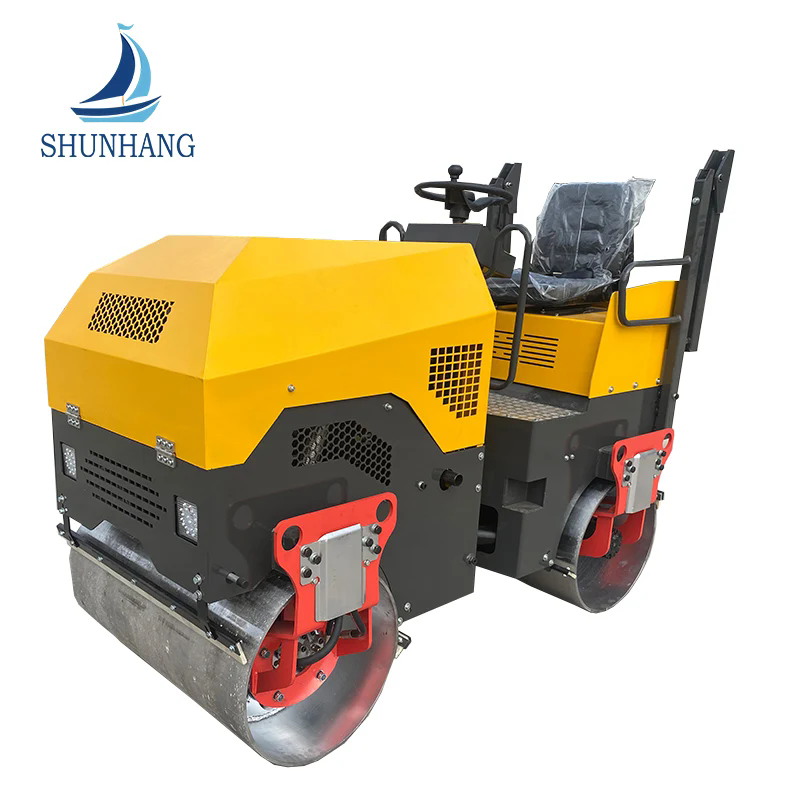Why Road Roller Matters for Modern Construction?
2025-08-20
A road roller, also known as a compactor or roller-compactor, is an essential machine in modern construction, designed to compact soil, gravel, concrete, or asphalt during the construction of roads and foundations. Whether building highways, airport runways, parking lots, or industrial yards, the quality and strength of the base layer directly affect long-term durability. This is where road rollers play a critical role.
Road rollers work by using heavy steel drums or pneumatic tires to apply pressure to surfaces, reducing air pockets and increasing density. With advancements in engineering, modern rollers are now more fuel-efficient, environmentally friendly, and capable of handling diverse terrains with precision.
Key Functions of Road Rollers
-
Surface Compaction: Ensures soil and asphalt layers are compressed tightly for improved stability.
-
Density Enhancement: Reduces voids within layers, increasing load-bearing capacity.
-
Surface Smoothing: Creates a uniform, smooth finish for better driving comfort and safety.
-
Layer Bonding: Improves adhesion between asphalt layers for stronger, longer-lasting roads.
Unlike older manual techniques, today’s road rollers offer hydraulic control systems, vibration technology, and eco-friendly engines, making them indispensable for infrastructure development worldwide.
How Does a Road Roller Work?
Understanding how a road roller functions is key to selecting the right machine for any project. Although designs vary, all road rollers operate on the principle of applying downward force combined with vibration or kneading to compact material.
Step-by-Step Working Mechanism
-
Material Spreading: The layer of soil, gravel, or asphalt is evenly distributed before rolling.
-
Static Pressure: The roller’s heavy drum applies downward pressure to compress loose particles.
-
Vibration Technology: In modern rollers, high-frequency vibration breaks the internal structure of materials, allowing particles to interlock more tightly.
-
Multiple Passes: Operators make several passes until the required compaction density is achieved.
-
Final Smoothing: Some rollers include oscillation or pneumatic tires for a smooth, uniform finish.
Types of Road Rollers
| Type | Description | Best For |
|---|---|---|
| Single Drum Roller | One large steel drum in front, tires at the back | Soil, gravel, and landfill compaction |
| Double Drum Roller | Two large steel drums, front and rear | Asphalt finishing and road surfaces |
| Pneumatic Tire Roller | Uses multiple rubber tires for kneading action | Asphalt and granular soil layers |
| Vibratory Roller | Combines static pressure and vibration | High-density compaction projects |
| Sheepsfoot Roller | Protruding knobs for deep soil compaction | Clay and cohesive soil types |
Each type has specific strengths depending on project requirements. For example, double drum vibratory rollers are perfect for asphalt finishing, while sheepsfoot rollers excel at compacting cohesive soils like clay.
Product Specifications and Advanced Features
Shunhang’s road roller series delivers unmatched efficiency and durability for demanding projects. Designed for global construction standards, they combine powerful engines, advanced hydraulics, and eco-friendly designs to maximize productivity.
Key Features
-
High-Performance Engines: Meets international emission standards for eco-friendly operation.
-
Dual Vibration Modes: Adjustable frequencies for fine or deep compaction.
-
Ergonomic Operator Cabin: 360° visibility, low noise, and air-conditioning for enhanced comfort.
-
Advanced Hydraulic Systems: Smooth, precise, and energy-efficient rolling control.
-
Durable Frame Design: Built for long service life even under extreme conditions.
Application Scenarios
-
Highways & Expressways: Delivers uniform compaction for heavy-traffic endurance.
-
Airport Runways: Ensures smoother landings and higher safety margins.
-
Urban Roads: Low-noise rollers suitable for city environments.
-
Industrial Yards: Handles heavy-duty surfaces requiring extra stability.
Choosing the Right Road Roller & FAQs
Selecting the right road roller depends on project type, soil condition, and compaction requirements. Here’s how you can make the right choice:
-
For large highways, go with a double drum vibratory roller for deep compaction.
-
For asphalt finishing, pneumatic tire rollers provide a smoother finish.
-
For clay-heavy terrains, sheepsfoot rollers are unmatched.
FAQs about Road Rollers
Q1: What is the difference between a single drum and a double drum road roller?
A1: A single drum roller uses one steel drum at the front and tires at the rear, making it ideal for soil compaction and rough terrains. A double drum roller, with drums at both ends, is better for asphalt finishing, offering higher surface smoothness but less maneuverability on uneven ground.
Q2: How do I determine the right road roller for my project?
A2: Start by analyzing the type of material you need to compact. For cohesive soils, choose a sheepsfoot roller; for granular soils, go with a vibratory roller. If you're working on asphalt surfaces, double drum or pneumatic rollers deliver optimal results. Always match the machine’s weight and vibration frequency to the project’s density requirements.
In today’s infrastructure-driven world, the road roller is more than just a compaction machine — it’s the backbone of modern construction. From highways to airport runways, its role in delivering stable, long-lasting surfaces cannot be overstated.
Shunhang is a trusted leader in manufacturing high-performance road rollers designed for global markets. With advanced engineering, eco-friendly engines, and durable designs, our machines ensure top-quality results for every project.
If you’re looking for a reliable partner to supply road rollers that meet your toughest demands, Shunhang is here to help.
Contact us today to learn more about our complete product line and how we can support your next project.



